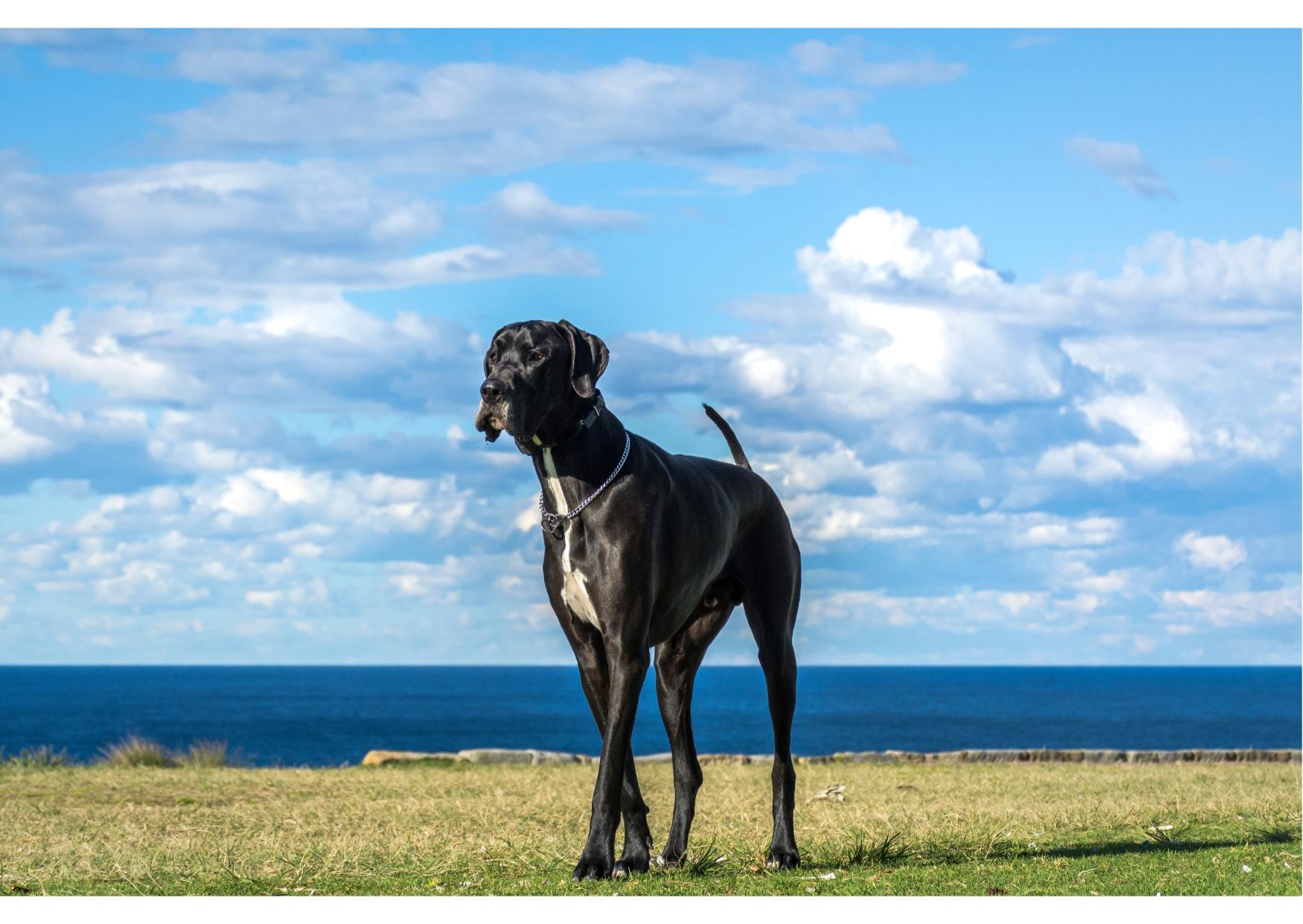GREAT DANE
| Group: | Working |
|---|---|
| Size: | Giant |
| Temperament: | Friendly, Patient, Dependable |
| Height: | 30-34 inches (male), 28-32 inches (female) |
| Weight: | 56-80 Kg (male), 46-64 Kg (female) |
| Life Expectancy: | Under 10 years |
| Origin: | Germany |
| Coat Length: | Short |
| Coat Type: | Smooth |
| Color: | Black Black & White Blue Brindle Fawn Harlequin Merle Silver White Mantle |
About
The Great Dane is a gentle giant that will make an excellent family friend. However, an owner must be ready to accommodate the dog's large size in terms of room and feeding, both of which can be expensive. Great Dane is one of the most impressive dogs because of its size, dignity, and elegance. Danes are very affectionate dogs, but they also make excellent watch dogs. These canines are gentle with children and people pleasers.
Nutrition
Give the Great Dane food a premium dog food suitable for the dog's age (puppy, adult, or senior). Offer table scraps sparingly, if at all, and avoid cooked bones and high-fat items.. Owners need to be aware that bloat, in which the stomach twists and enlarges, is the main cause of death in the breed. Although the exact causes of bloat are unknown, experts concur that eating several small meals throughout the day and avoiding strenuous exercise right before meals can help lower the likelihood of it happening.
Ideal Meal Breakdown
Protein
31
Fat
19
Carbohydrates
42
Others
8
Exercise
Great Danes may appear laid-back, but they need daily exercise that is age-appropriate. A quick stroll twice or three times per day may be sufficient. They can be excellent running or hiking partners, but you must wait until the dog is 2 years old to do so to protect developing joints. Avoid strenuous exercise right before or right after meals to prevent bloating. Danes have a propensity to follow their nose wherever it leads them, so it is best to keep them on a leash at all times and to only let them run free in areas that have a high fence. Many Great Danes take part in sports like flyball as well as agility, obedience, tracking, and weight pulling.
Grooming
The short, smooth coat of the Great Dane doesn't shed much for the majority of the year, but given the size of the dog, this can still add up to a fair amount of hair. The least amount of shedding can be achieved by brushing your dog once a week with a medium-bristle brush, a rubber grooming tool or mitt, or a hound glove. However, hair loss will be more severe once or twice a year during shedding season, making daily brushing ideal. Rarely, unless they get into something messy, do Great Danes require a bath. Like all breeds, the Great Dane needs to have its nails cut regularly because they can become painful and interfere with their ability to run and walk.
Training
It is advised to take puppy training classes as well as early socialisation. Obedience training is essential for a breed like the Great Dane, which is big and strong. He will grow into a well-adjusted adult through socialisation, which involves exposing the puppy to a variety of people, places, and situations gradually. The social, friendly, and eager-to-please nature of Great Danes makes them responsive to firm, consistent training techniques. They require human interaction, love, and socialisation with both humans and animals.
Health
Gastric dilatation-volvulus (GDV), also known as bloat, is the leading cause of death in Danes. Owners should become knowledgeable about the warning signs of bloat and what to do if it occurs. A prophylactic gastropexy, also known as a "preventative tack," is a procedure that many breeders and owners think about using to help avoid some of the more severe effects of GDV. In addition the breed is susceptible to hip dysplasia, hypothyroidism, and autoimmune thyroiditis.
History
The Great Dane dog breed originated in Germany in the 16th century and is often referred to as the German Mastiff or Deutsche Dogge. Originally, they were bred to hunt wild boar and guard estates. Its size and power were eventually used for various activities like as guarding and lugging huge goods. They were crossbred with English Mastiffs in the 1800s to boost their size and temperament. The Great Dane grew popular in Europe and North America after being recognised as a distinctive breed. They are now adored household pets noted for their gentle demeanour, devotion, and intimidating size.
